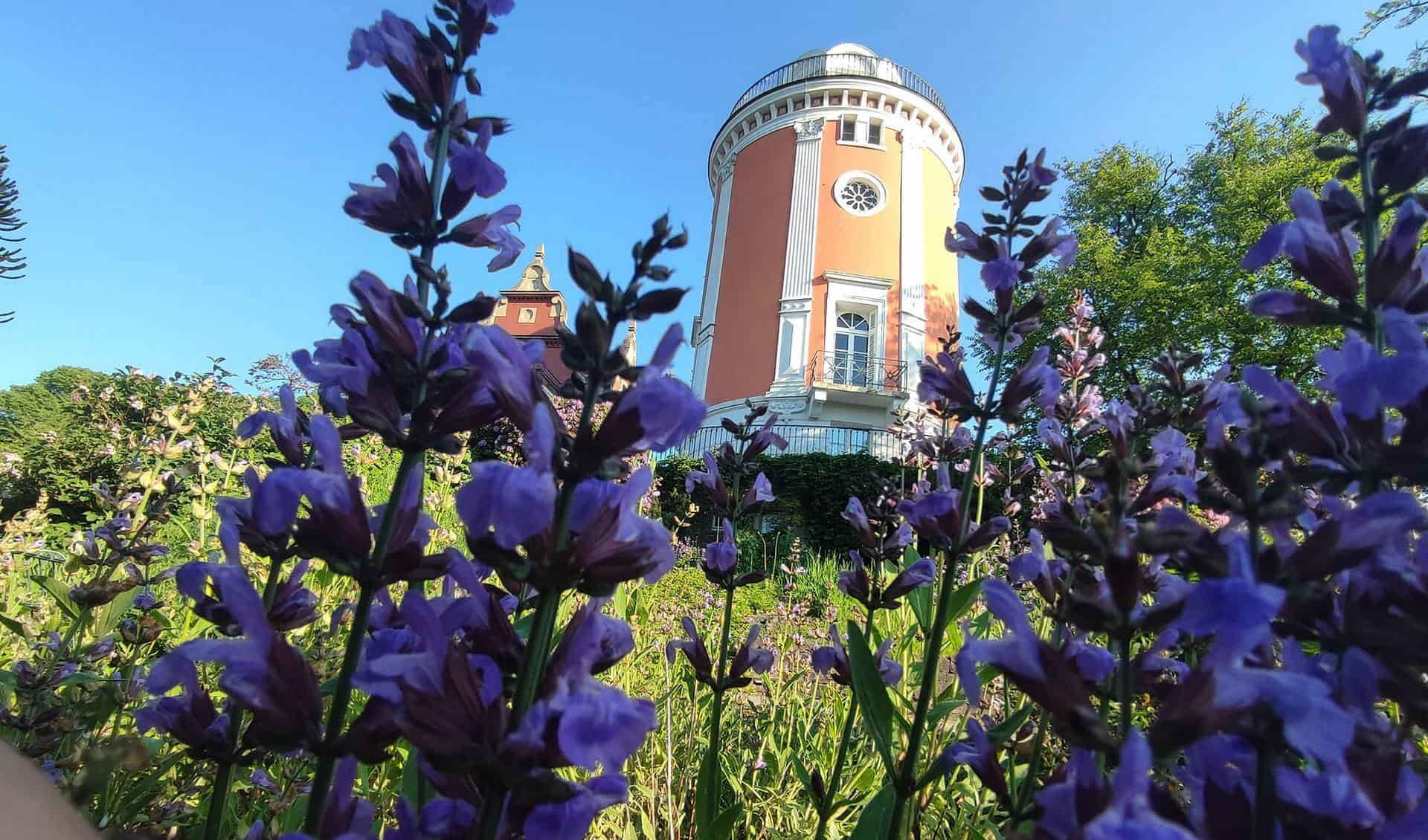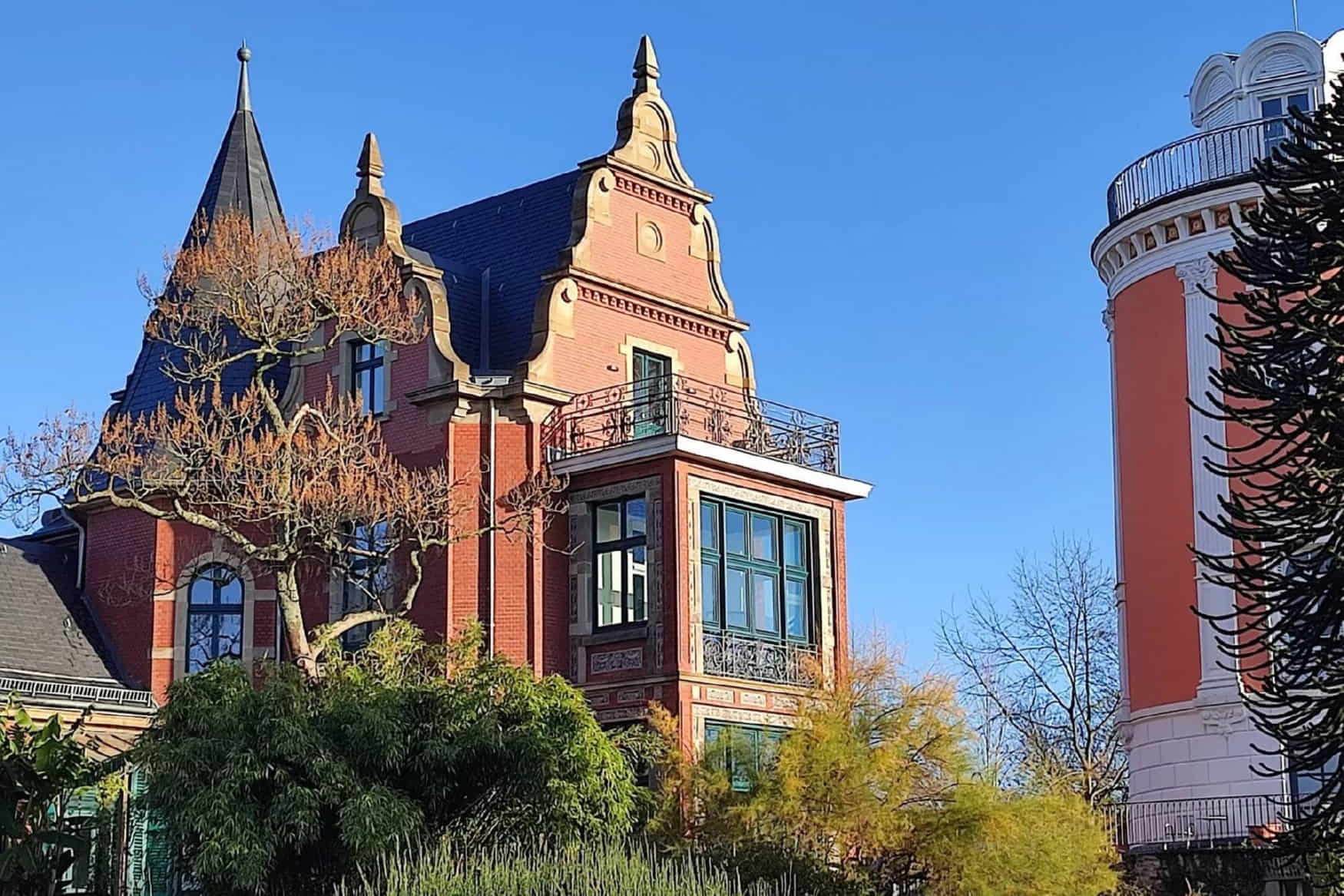The Botanical Garden Wuppertal, a verdant oasis in the heart of North Rhine-Westphalia, Germany, has captivated visitors since its inception in 1890. Established as a modest botanical school garden, it found its permanent home in 1910 at the picturesque Villa Eller'schen estate. This relocation began a horticultural journey spanning over a century, transforming the garden into a 2.5-hectare wonderland of diverse plant species and architectural marvels.
The Botanischer Garten der Stadt Wuppertal invites nature enthusiasts, families, and curious minds to explore its rich tapestry of flora, historical structures, and educational exhibits. From its south-facing slopes to its state-of-the-art greenhouses, the garden offers a unique blend of natural beauty and scientific discovery that continues to evolve and inspire.
Highlights
- Elisenturm: A historical landmark offering panoramic views of Wuppertal
- Villa Eller: Neorenaissance architecture showcasing ornate interiors
- New greenhouse complex: Home to tropical crops and specialized plant displays
Contents
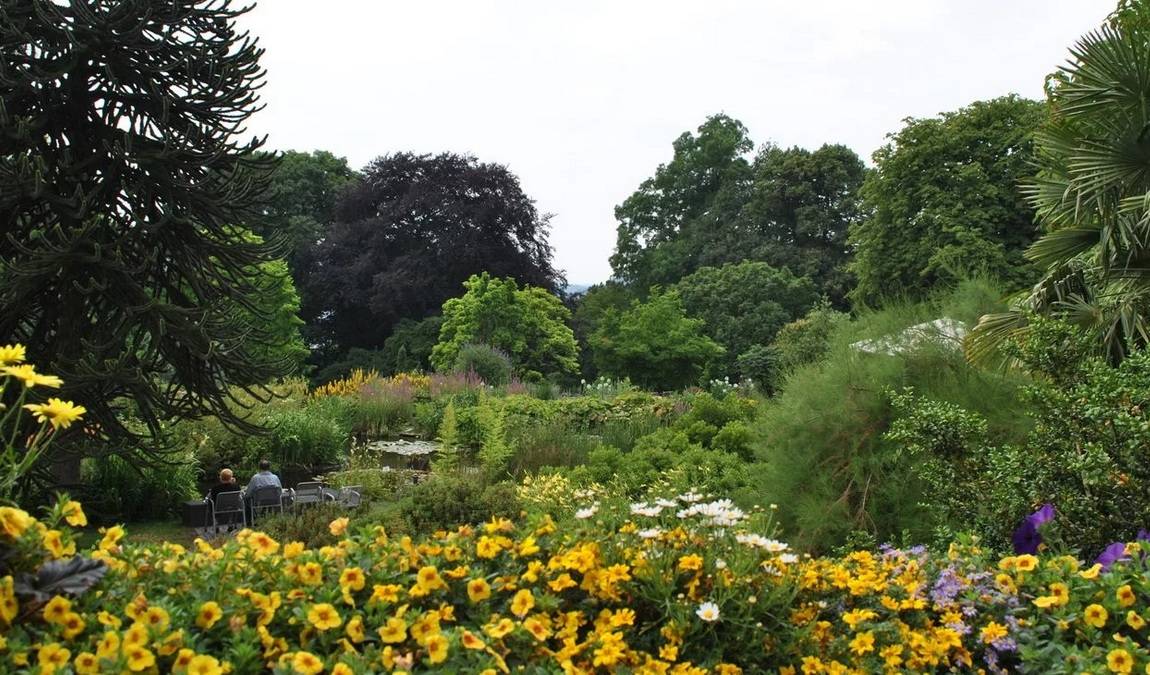 Photo: wuppertal.de
Photo: wuppertal.de
Here is Why Your Kids Will Find it Interesting
Botanical Garden Wuppertal is worth visiting with kids aged 5-12 who are fascinated by the wonders of nature. The garden's carnivorous plants exhibit is a particular draw, featuring Venus flytraps that captivate young minds with their dynamic capturing mechanisms. Children can embark on a global botanical adventure, exploring plants from various climatic zones without leaving Wuppertal. The garden's interactive elements and seasonal changes provide endless opportunities for learning and discovery, making each visit a unique experience for curious young naturalists.
Family-friendly features
- Educational guided tours tailored for different age groups
- Interactive plant identification stations
- Café Botanischer Garten for family refreshments
Exploring the Garden's Diverse Landscapes
 Photo: facebook.com/p/Botanischer-Garten-Wuppertal-100029115116626
Photo: facebook.com/p/Botanischer-Garten-Wuppertal-100029115116626
The Botanical Garden Wuppertal spans 2.5 hectares of meticulously curated landscapes, each telling a story of botanical diversity and ecological adaptation. Its unique topography, characterized by south-facing slopes, creates microclimates that support an impressive array of plant life.
- Landscape features:
- Romantic landscape garden dating from 1807
- Rose garden (formerly the original 4600 m² plot)
- Water steps add a dynamic element to the central square
The garden's design takes full advantage of its sloping terrain, offering visitors stunning vistas of the surrounding urban landscape while providing optimal growing conditions for its diverse plant collections. This thoughtful layout enhances the aesthetic appeal and serves educational purposes, demonstrating how plants adapt to various environmental conditions.
At a distance of 1.3 kilometres is the Von der Heydt Museum, which we recommend to visit with the whole family.
Plant Collections and Themed Areas
.jpg) Photo: facebook.com/p/Botanischer-Garten-Wuppertal-100029115116626
Photo: facebook.com/p/Botanischer-Garten-Wuppertal-100029115116626
The Botanical Garden Wuppertal boasts an impressive array of plant collections and themed areas, each offering a unique glimpse into the world of botany, tropical and subtropical species, medicinal and herb gardens, a carnivorous plants exhibit, and a bulb and tuber collection.
One of the garden's crown jewels is its collection of approximately 400 protected species, including rare specimens from genera such as Babiana, Cyclamen, Gladiolus, Iris, Moraea, Paeonia, and Scilla. This commitment to conservation underscores the garden's role in preserving biodiversity.
The medicinal and herb garden is an educational resource and a sensory experience. Visitors can learn about the healing properties of various plants while enjoying their fragrances and textures.
The Greenhouse Complex
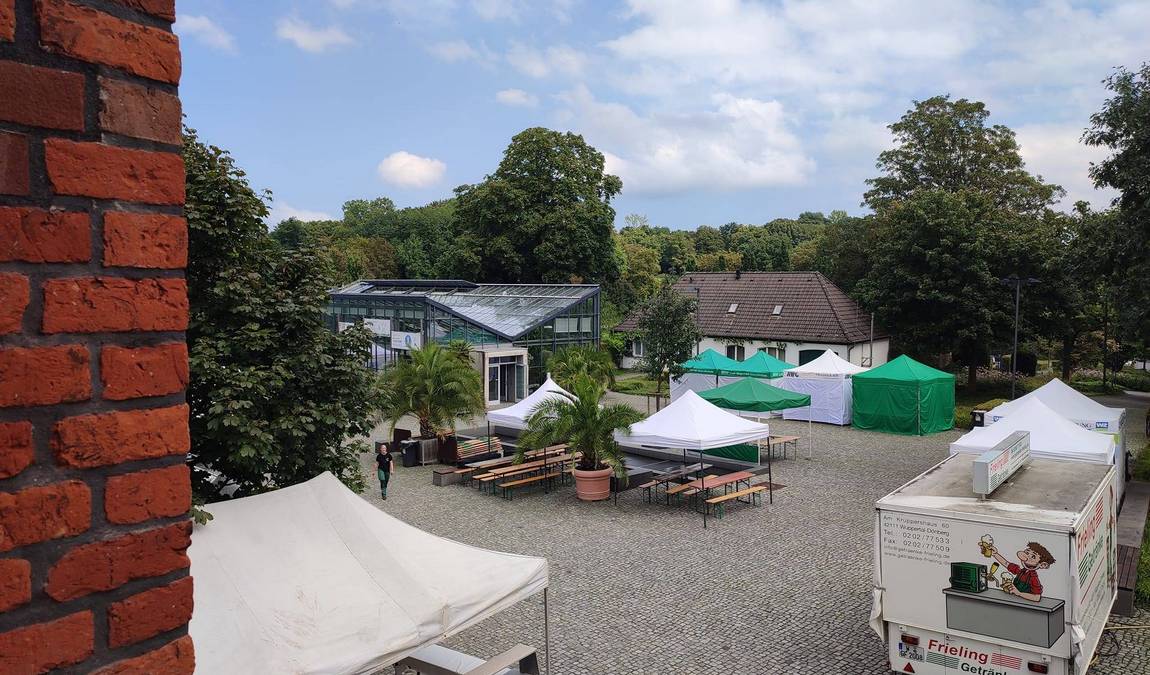 Photo: facebook.com/p/Botanischer-Garten-Wuppertal-100029115116626
Photo: facebook.com/p/Botanischer-Garten-Wuppertal-100029115116626
In 2006, the Botanical Garden Wuppertal underwent a significant expansion with the addition of three new greenhouses:
| Greenhouse | Size | Purpose |
|---|---|---|
| Demonstration Greenhouse | 400 m² | Tropical crops, exhibitions, events |
| Smaller Greenhouse | 1100 m² | Bulbs and tuber plants |
| Smaller Greenhouse | 2100 m² | Cacti and succulents |
These modern facilities have greatly enhanced the garden's ability to showcase plants from diverse climatic regions. The large demonstration greenhouse, in particular, serves multiple functions, housing tropical crops, providing space for exhibitions and events, and offering a sanctuary for overwintering plants.
Seasonal Attractions
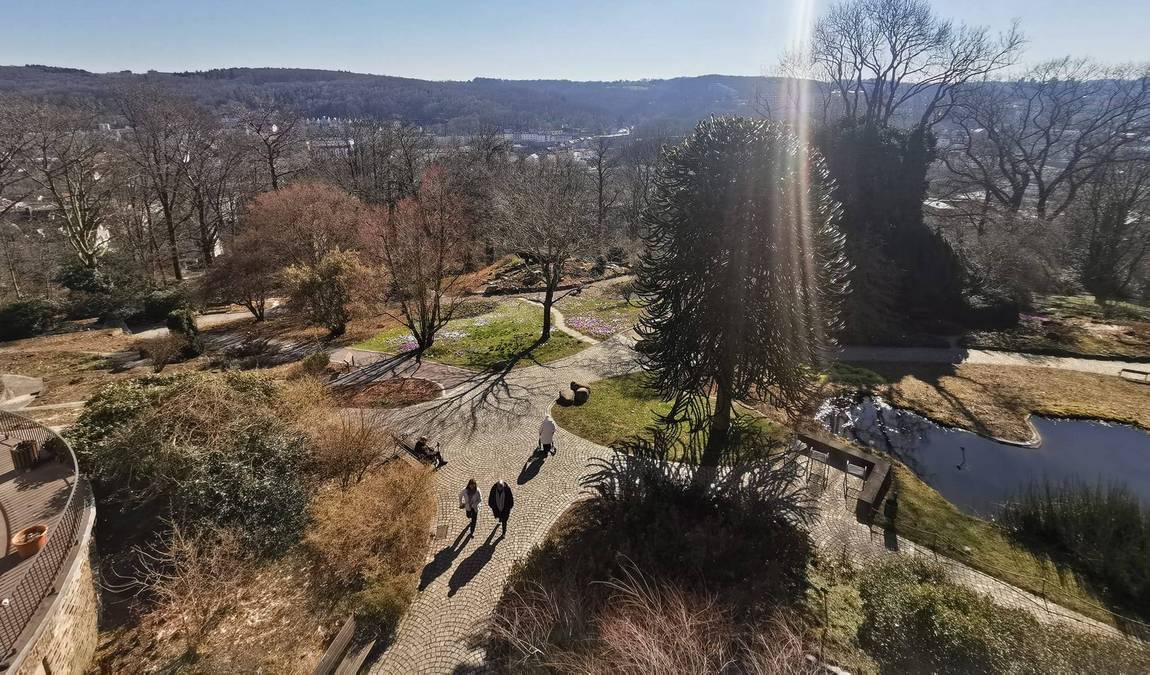 Photo: facebook.com/p/Botanischer-Garten-Wuppertal-100029115116626
Photo: facebook.com/p/Botanischer-Garten-Wuppertal-100029115116626
The Botanical Garden Wuppertal offers year-round attractions, with each season bringing its unique charm:
- Spring:
- Wild cyclamens (Cyclamen coum) carpet the ground
- Crocus tommasinianus create vibrant displays
- Summer:
- Rose garden in full bloom
- Tropical and subtropical plants thrive in outdoor displays
- Autumn:
- Colorful foliage transforms the landscape
- Late-blooming species extend the floral season
- Winter:
- Greenhouse collections provide a warm retreat
- Structural beauty of deciduous trees and shrubs
These seasonal changes ensure that every visit to the garden offers a new and exciting experience, encouraging repeat visits throughout the year.
Best Time to Visit
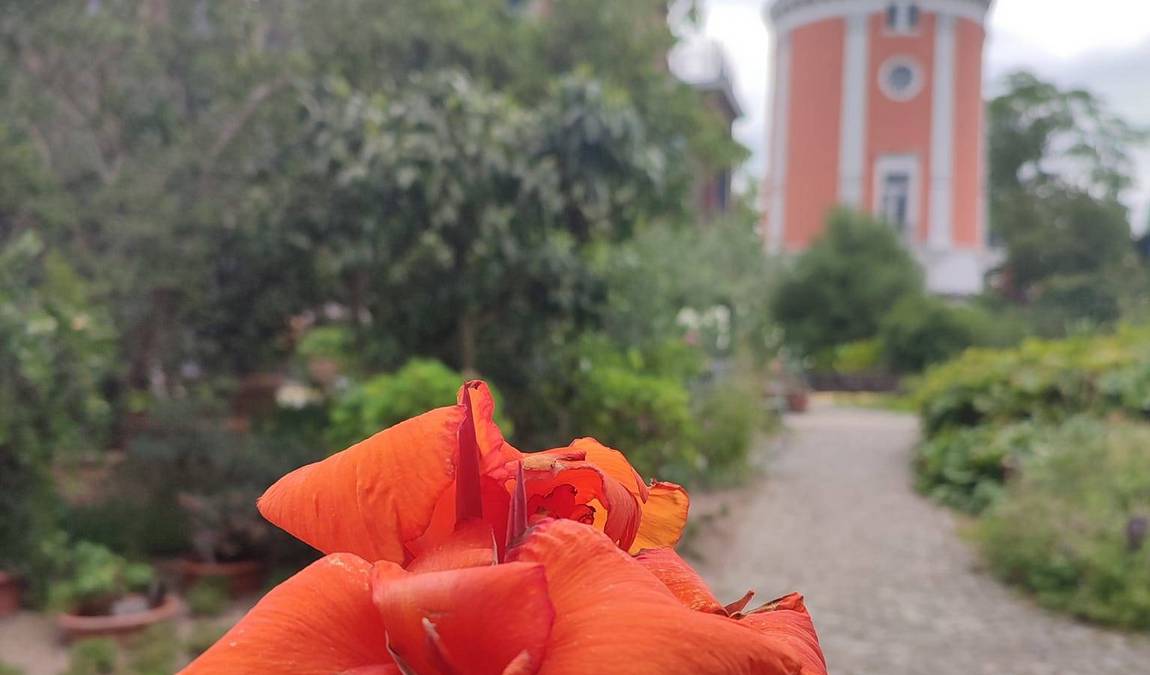 Photo: facebook.com/p/Botanischer-Garten-Wuppertal-100029115116626
Photo: facebook.com/p/Botanischer-Garten-Wuppertal-100029115116626
The best time to visit the Botanical Garden Wuppertal with children is late spring to early autumn, particularly on weekends when special family programs are often offered. Mornings are ideal for exploring the outdoor areas, while afternoons can be spent in the cooler greenhouses. Weekdays are generally less crowded, providing a more relaxed experience for families.
Recommended Duration: A typical visit lasts 2-3 hours, allowing ample time to explore the main attractions and participate in activities.
Our Resume
The Botanical Garden Wuppertal is a testament to the city's commitment to botanical education and conservation. Its rich history, diverse plant collections, and modern facilities make it a must-visit destination for plant enthusiasts and families. The garden's ability to blend historical charm with contemporary botanical science creates an engaging environment that educates and inspires visitors of all ages.


